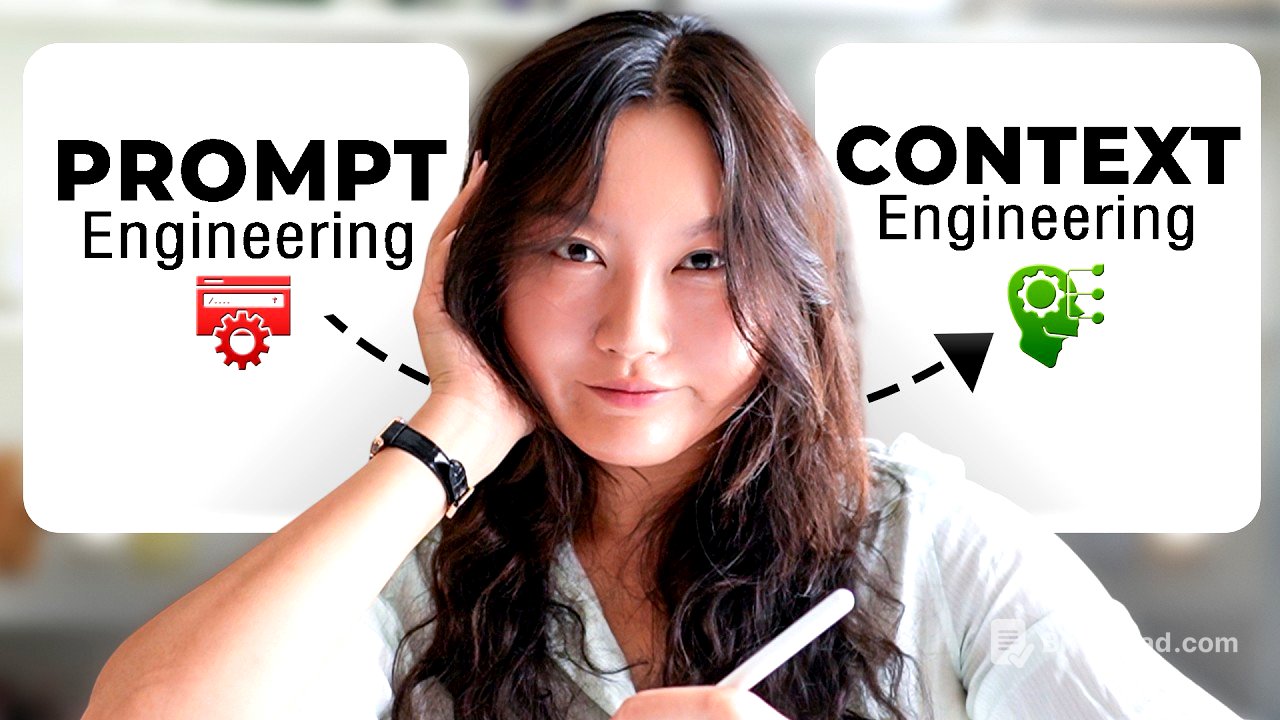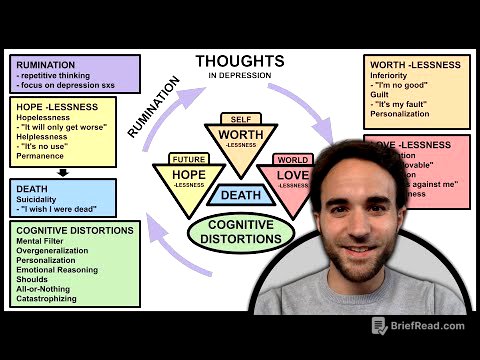TLDR;
This video explains context engineering, its relevance to AI application development, and how it differs from prompt engineering. It details the essential components of an AI agent and how context engineering serves as the instruction manual for these components. The video also provides a practical example of a context-engineered prompt for an AI research assistant and shares resources for further learning.
- Context engineering is crucial for building AI applications like AI agents, focusing on providing the right information in the right format at the right time.
- The six essential components of an AI agent are model, tools, knowledge and memory, audio and speech, guardrails, and orchestration.
- Context engineering involves creating a detailed prompt that instructs the AI agent on how to use its various components and tools effectively.
Intro [0:00]
The video introduces the concept of context engineering, explaining its origins and relevance. It promises to cover the definition of context engineering, its purpose, practical application, and concrete examples. The video includes assessments to test understanding of the material.
Context Engineering Defined & How It Differs From Prompt Engineering [0:34]
Context engineering involves designing dynamic systems that provide Large Language Models (LLMs) with the appropriate information in the correct format at the right time to complete a task. It is particularly relevant for those developing LLM applications, including AI agents. While context engineering is considered the evolution of prompt engineering, prompt engineering remains relevant for simple chatbot interactions. Context engineering becomes essential when building AI agents because it requires providing comprehensive instructions and resources to handle various scenarios, unlike the iterative nature of chatting with a chatbot. The complex prompts used in context engineering often resemble code, distinguishing it from basic prompting. Context engineering is the progression of prompt engineering in crafting complex prompts for building AI applications.
Quiz 1 [2:43]
The video presents a quiz question to test the viewer's understanding of the concepts discussed so far. Viewers are encouraged to write their answers in the comments section.
Using Context Engineering to Build an AI Agent [2:53]
An AI agent is defined as a software system that uses AI to achieve goals and complete tasks on behalf of users, such as customer service, sales assistance, or coding assistance. Regardless of the type, every AI agent consists of six essential components: model, tools, knowledge and memory, audio and speech, guardrails, and orchestration. These components are analogous to the elements of a burger: bun, patty, vegetables, and condiments. The context engineer's role is to create an instruction manual, detailing how these components work together, including tool usage, memory access, knowledge base, and audio/speech functionalities. The resulting prompt serves as the AI agent's guide for utilizing its capabilities, making it crucial to refine this prompt through context engineering.
Quiz 2 [5:44]
Another assessment is presented to the viewers in the form of quiz questions, encouraging them to share their answers in the comments section.
Demo: Context Engineered Prompt For An AI Agent [6:42]
The video demonstrates a context-engineered prompt for an AI research assistant designed to identify and summarize AI trends. The system prompt is structured into six components using markdown format: role, task, input, output, constraints, and capabilities and reminders. The task component details the steps the AI agent should take, such as extracting subtasks, prioritizing them, generating JSON outputs, calculating time periods, and summarizing findings. The input is specified using XML tags, and the output format is defined in JSON, including variables like ID, query, source type, time period, domain focus, priority, start date, and end date. Constraints focus on succinctness and avoiding fluff, while capabilities and reminders specify the tools and knowledge bases the agent can access, such as web search, and reminders to ensure relevance. The presenter also shares that such system can be split into multi-agent systems.
Context Engineering Resources [11:07]
Two resources are recommended for those wanting to learn more about context engineering. The first is a blog post from Cognition, which shares two principles for context engineering in multi-agent frameworks: always share context between agents, and recognize that actions carry implicit decisions. The second resource is an article from Langchain, which presents a framework that breaks down common strategies for context engineering, including writing context, selecting context, compressing context, and isolating context.
Quiz 3 [12:32]
A final assessment is presented to the viewers in the form of quiz questions, encouraging them to share their answers in the comments section.









